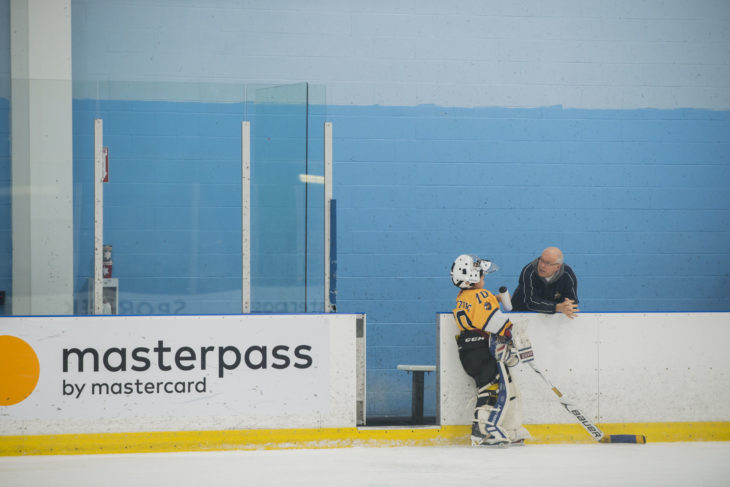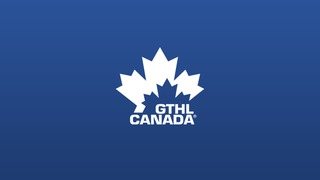Putting the spotlight on the hardest workers in sports
As I write, it’s National Volunteer Week in Canada (April 15-21). This year’s theme is: “Celebrate the Value of Volunteering – building confidence, competence, connections and community.”
The GTHL and all its levels – house leagues, Select/NYHL, the Mississauga Hockey League, and the A, AA and AAA divisions – are favoured with great volunteers. Our huge volunteer group includes officers and administrators of these divisions, leagues and Clubs, coaches and assistant coaches, team
managers, statisticians, parent coordinators, fundraisers, game officials (who receive modest compensation for their time), and many others. It also includes the GTHL board of directors and its various committees. The volunteer base exceeds 7,000.
“Volunteering is a selfless act – the giving of time, skills and experience to help others, without expecting anything in return” (Volunteer Canada). Any hockey league in Canada, or for that matter, any sports league, will say that volunteers are their most valuable resource. When you factor in all volunteering in Canada in all fields including charities, according to a recent report by Statistics Canada, 44 per cent of the Canadian population aged 15 years and older perform volunteer work of some kind. And a 2018 Conference Board of Canada Report notes that volunteer contribution to the Canadian economy is valued at $56 billion.
Nevertheless, we often hear from GTHL organizations that it’s becoming more difficult to attract volunteers. And that their long-serving volunteers are carrying too much of the load. This seems to be verified by the national data: while the Stats Canada report shows very good levels of volunteerism, it also shows a decline of about 4% over the last few years. And the Conference Board notes that Canadian adults age 55 and over contributed a much higher number of hours on average. Furthermore, at least in the higher competitive levels of the GTHL, paid coaches and administrators have become a norm. For the most part, such professional coaches have very good hockey knowledge and impart that to their players. But what do these trends portend for the future?
A recent article (written in the context of amateur soccer) asked: Is It the Beginning Of The End For Amateur Sport Volunteerism. The author suggests that the volunteer-led sport system is under threat, and that amateur sport has not yet fully confronted the reality of it. According to Vital Signs, a national program coordinated by True Sport Foundation (True Sport) and Community Foundations of Canada (CFC), it is the lack of time available to young parents – whether the causes are economic, family or other pressures – that has become a significant barrier to volunteering. Furthermore, Varian argues that the shift toward compensating coaches – even such things as discounts on registration fees for coaches’ kids – fundamentally changes peoples’ attitudes toward volunteerism: “You can’t go back once you have started structurally rewarding volunteers with money. The genie’s out of the bottle.” With paid professional coaching, comes higher parental expectations and a greater focus on winning as the primary end goal. But as John Sullivan of Changing the Game Project observes: “Winning does not make for a great coach. Being a great role model and leader for your young athletes, teaching character and life lessons, caring about your athletes, and coaching a child, not a sport – those things make for a great coach.”
Are those objectives being downgraded as the volunteerism model of amateur sport in Canada changes? How do we attract more volunteers? And how do we blend volunteerism with changing trends in minor sports and in society?
The Vital Signs report by True Sport and CFC notes that anyone who has been faced with recruiting, managing and retaining volunteers knows that these are not simple challenges or tasks. It starts with having a good understanding of your volunteers and their motivations. People volunteer for a variety of reasons. “By understanding what motivates people to volunteer, managers of volunteer resources can better focus their recruitment strategies, design volunteer opportunities, structure training, and implement appropriate methods of recognition.” Vital Signs recommends taking an “inventory” of your volunteers, and defining the needs of both the organization and prospective volunteers. Recruitment should target individuals with the appropriate skills, interest, and commitment. And it is necessary to “sell” the benefits. “In addition to ‘warm and fuzzies,’ many volunteers – particularly younger volunteers – have tangible expectations. They want to learn, to exercise their skills and abilities, to challenge themselves, and to gain new knowledge and abilities. A volunteer experience can provide this. These benefits, if promoted, might help to draw non-volunteers into the ranks.”
Once brought in, training is then critical to ensure that volunteers understand and can carry out their tasks based on a consistent base of knowledge, values and guidelines. As most readers will know, all coaches, managers and trainers in the GTHL are required to take specified courses depending on their level of coaching (Coach Level 1 or 2, Development 1, High Performance 1; and for trainers, the certification program at the applicable levels) as well as the Speak Out course or Respect in Sport, and the OHF Transgender Inclusiveness Training program. There are numerous other training resources available, including for the new Initiation Program. The GTHL leagues and clubs also have policies and guidelines that must be followed by their team officials. Our referees also have various required training courses, geared to the levels of hockey they will officiate, and there is an on-going referee supervision process. And of course, all volunteers should not only be trained and supported, but need to be recognized appropriately by clubs and teams for their efforts.
Visit Volunteer Canada at volunteer.ca for ideas about engaging volunteers, introducing newcomers, volunteer management, and other suggestions.
One encouraging sign is that, according to demographic sources, young Canadians have developed high volunteer participation rates in recent years. The rate of volunteering is highest among teens, with two-thirds of those aged 15 to 19 volunteering their time (Stats Canada 2013). Of course, this is partly due to high school volunteer credits, but once exposed to the benefits of volunteering, many will continue – perhaps for a lifetime. In the GTHL, many players and former players are willing to give back, but they may need to be actively recruited. In addition to their coaching skills, they can be a source of fresh ideas and energy in an organization. Committed young volunteers can help an organization forge stronger, broader links in the community and can be excellent ambassadors for their house league, club or team. When considering surveys of the overall volunteer landscape, the good news is that sports leagues and teams are uniquely positioned to attract and inspire good volunteers. “By its very nature, sport is about participation. It is about inclusion and citizenship. (UN Report on Sport for development and peace). In particular, the passion for hockey among Canadians is a deep and rich resource for minor hockey organizations. And on the other side of the equation, most volunteers in any sector, commenting on their volunteering experience, will invariably say: “you get more than you give.”
Thank you to all our volunteers for your vital contributions.








